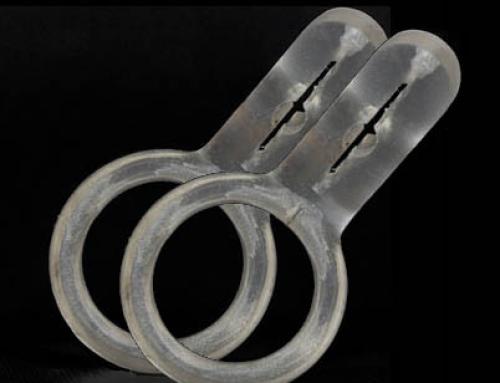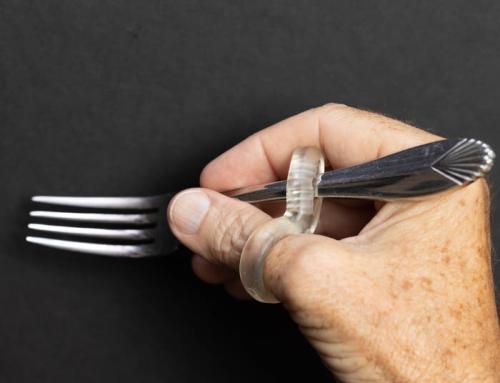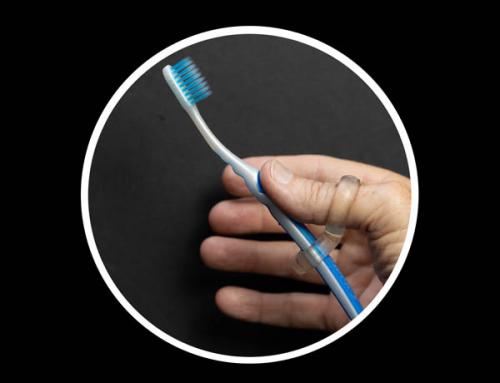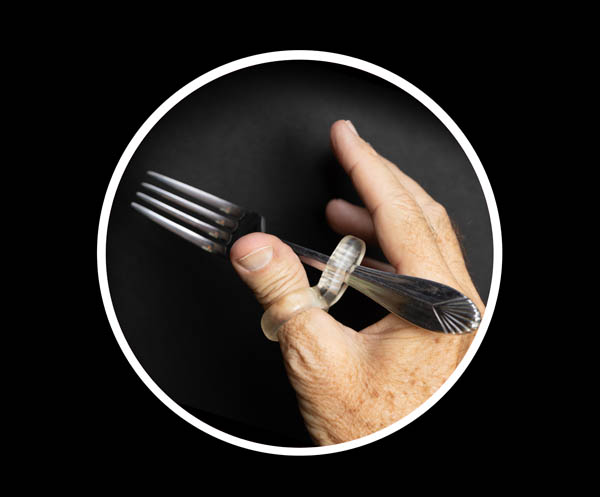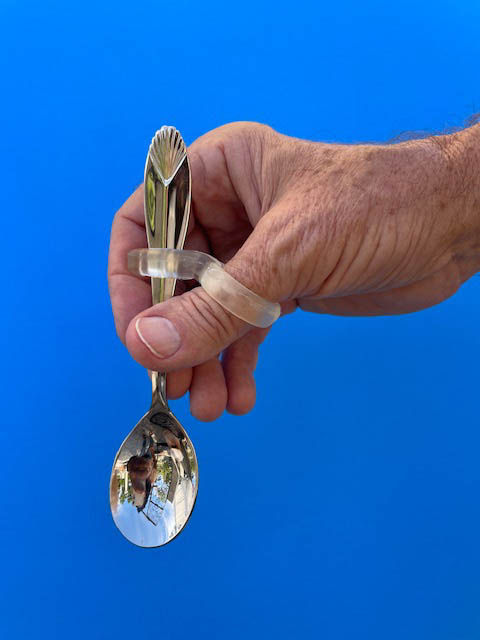
Mealtime can be a stressful experience for the elderly and disabled. Simple tasks like holding a fork or spoon can become difficult and frustrating when hand strength and coordination are limited. Conditions such as arthritis or tremors can make it challenging to grip utensils properly, turning what should be a pleasant activity into a source of stress and discomfort.
Many elderly and disabled individuals face similar difficulties. For some, the pain in their hands makes it hard to hold utensils securely, leading to frequent spills and accidents. For others, shaking hands or reduced dexterity can make it impossible to eat without assistance. These challenges not only affect physical health but also impact emotional well-being, as the struggle to eat independently can be quite demoralizing.
GETAGRIP offers a helpful solution to these problems. By providing a comfortable and secure grip, it allows the elderly and disabled to hold utensils with ease, making mealtime a stress-free experience. In this article, we will discuss the challenges faced during meals, how GETAGRIP can help, practical tips for using GETAGRIP, and other tools that complement it to make mealtime easier and more enjoyable.
Challenges of Mealtime for the Elderly and Disabled
Mealtime can be especially difficult for elderly and disabled individuals due to various physical challenges. One common issue is hand weakness. Many elderly people experience a loss of hand strength, making it difficult to hold utensils securely. This leads to frequent drops and spills, turning a simple meal into a messy and frustrating ordeal.
Arthritis is another significant challenge. Severe joint pain and stiffness can make gripping a fork or spoon extremely painful and sometimes impossible. This condition not only causes physical discomfort but also makes eating independently a tough task. The pain experienced during simple actions like cutting food or scooping soup can turn mealtime into an unpleasant experience.
Tremors and coordination problems further complicate things. Individuals with conditions like Parkinson’s disease often struggle with shaky hands, which makes it hard to direct food from the plate to the mouth. These involuntary movements can lead to frequent spills, making the person feel embarrassed and dependent on others for help. Overall, these challenges diminish the joy of eating and can significantly impact one’s quality of life.
How GETAGRIP Improves Mealtime Experience
GETAGRIP offers a practical solution to the mealtime challenges faced by the elderly and disabled. By providing a secure and comfortable grip, GETAGRIP makes holding utensils much easier. It is designed to fit snugly in the hand, which reduces the amount of effort needed to maintain a firm grip. This is particularly beneficial for those with weak hands or arthritis, as it minimizes the pain and strain associated with gripping conventional utensils.
The design of GETAGRIP is ergonomic, meaning it supports the natural shape and motion of the hand. This makes it more comfortable to hold for extended periods, turning an otherwise painful experience into a more manageable one. For those with tremors, the secure grip provided by GETAGRIP reduces the likelihood of accidental spills, making it easier to guide food from the plate to the mouth without assistance.
Another great feature is the versatility of GETAGRIP. It can be attached to various types of utensils, from forks and spoons to knives and even straws. This means that users can maintain a consistent, comfortable grip across different mealtime tools. By making mealtime activities easier and more enjoyable, GETAGRIP helps individuals regain independence and confidence, significantly improving their overall quality of life.
Practical Tips for Using GETAGRIP During Meals
Using GETAGRIP can make mealtime much easier, but there are a few tips that can help you get the most out of this handy tool. First, make sure to attach GETAGRIP securely to your utensil. Whether you’re using a fork, spoon, or knife, a firm attachment ensures that the tool stays in place, providing a stable and comfortable grip.
Next, practice with different types of food. Start with items that are easy to handle, like mashed potatoes or soft vegetables. Gradually work your way up to more challenging items, such as cutting meat or eating soup. This will help build your confidence and improve your coordination over time.
Also, don’t forget to clean GETAGRIP regularly. Depending on the material, a quick rinse with soap and water after each meal should keep it in good condition. Keeping it clean ensures that the grip remains effective and safe to use. For those with arthritis or tremors, consider practicing mindfulness and taking your time during meals. Eating slowly not only makes the experience less stressful but also helps improve hand-eye coordination.
Complementary Tools and Techniques for a Better Mealtime
While GETAGRIP is an excellent tool for improving mealtime, there are other products and techniques that can further enhance your dining experience. Here are a few ideas:
1. Adaptive Utensils: Look for utensils with thicker handles or weighted bases. These can help reduce the effort required to hold them and improve stability.
2. Non-Slip Mats: Placing a non-slip mat under your plate can prevent it from sliding around, making it easier to scoop food.
3. Divided Plates: Using plates with dividers can help keep different foods separated, making it easier to eat without mixing everything together.
4. Electric Can Openers: An electric can opener takes the strain out of opening cans, which can be particularly helpful for those with weak hands or arthritis.
5. Ergonomic Cups: Cups with large handles or spill-proof lids can make drinking easier and reduce the risk of accidents.
In addition to using these tools, consider adopting some best practices for mealtime. Simple habits like sitting in a comfortable chair with good back support, positioning the plate at a suitable height, and taking small bites can make a significant difference. Combining these complementary tools and techniques with GETAGRIP can create a more enjoyable and stress-free mealtime experience.
Conclusion
Mealtime should be an enjoyable and stress-free experience, but for many elderly and disabled individuals, it can be filled with challenges. Weak hands, arthritis, and tremors can make it difficult to handle utensils, turning eating into a frustrating task. GETAGRIP offers a practical and effective solution, providing a secure and comfortable grip that makes holding utensils much easier. This tool helps reduce pain and strain, allowing users to eat with more independence and confidence.
In addition to GETAGRIP, there are other adaptive tools and techniques that can further enhance the dining experience. From adaptive utensils and non-slip mats to electric can openers and ergonomic cups, these tools offer additional support and convenience. Simple habits and practices can also make a big difference, helping elderly and disabled individuals enjoy their meals more comfortably and confidently.
If you or a loved one struggles with mealtime challenges, consider trying GETAGRIP. Visit GETAGRIP to learn more about our gripping aids and take the first step towards a more enjoyable and stress-free mealtime today.
About the author : seo rank
Latest videos
Join our mailing list today
Insider offers & flash sales in your inbox every week.
Curabitur non nulla sit amet nisl tempus convallis quis ac lectus dolor sit amet, consectetur adipiscing elit sed porttitor lectus.

